
Your opinion is important to us!
Help us improve by filling our quick survey
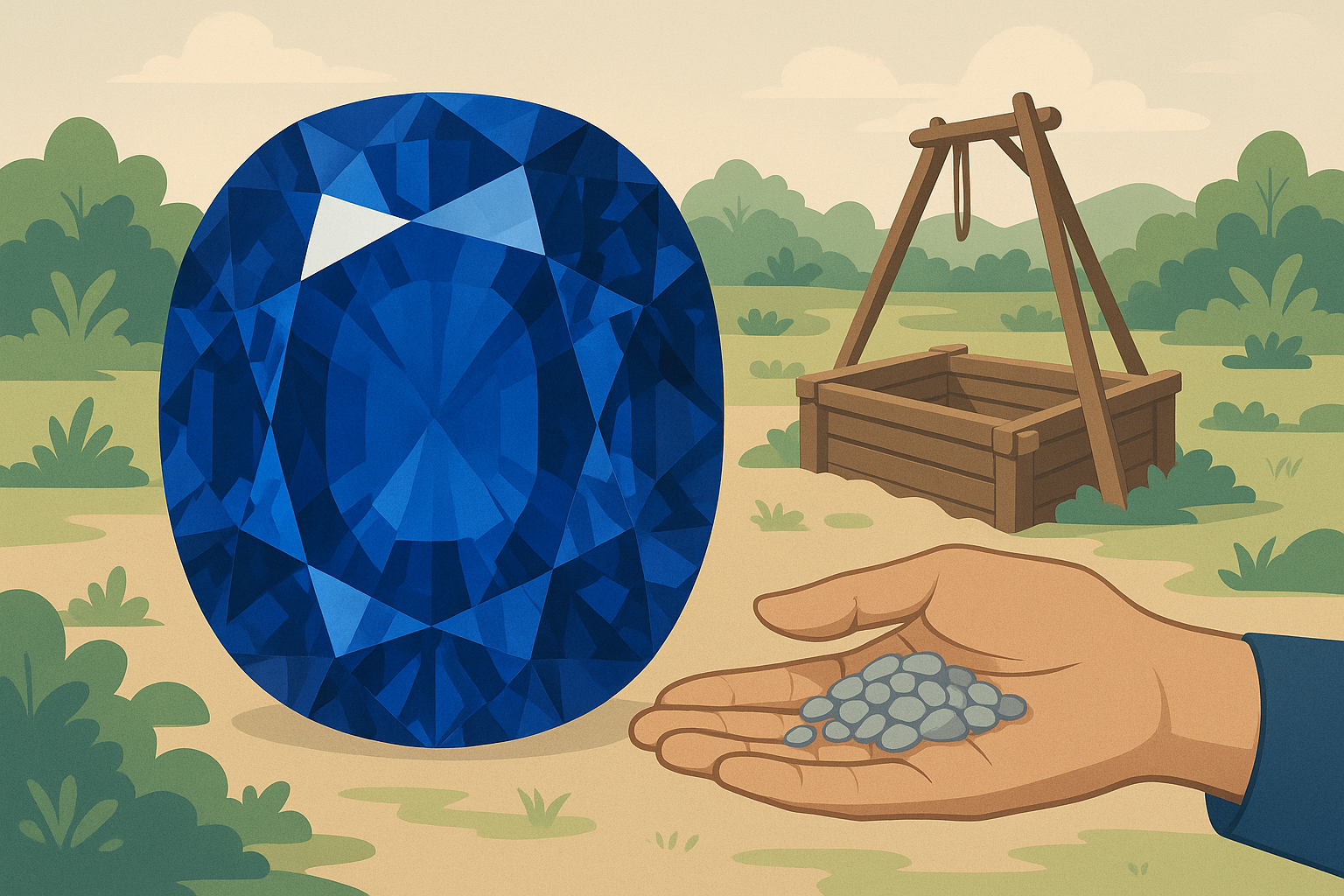
Mins Read
|
October 5, 2025
Choosing a sapphire supplier is about more than just color and clarity. For discerning jewelers, designers, and investors, it’s a decision about trust, ethics, and the story behind the stone. You need to know that your supply chain is not only reliable but also responsible. Yet, navigating the world of gemstone extraction can feel opaque, filled with romanticized stories that often lack the technical and ethical details you need to make a confident choice.
This guide changes that. We’re moving beyond surface-level descriptions to provide a clear, data-backed evaluation of the sapphire mining and extraction methodologies unique to Sri Lanka. Here, you will find the specific criteria needed to assess environmental impact, worker welfare, and the true meaning of sustainability in the gem trade—so you can align your business with a source that reflects your values.
The story of a Ceylon sapphire begins deep within the earth. Sri Lanka, historically known as Rathna Deepa or "Gem Island," is one of the oldest sources of sapphires in the world, with a heritage stretching back over 2,500 years. The island's Highland Complex provides the perfect geological conditions for corundum (the mineral family of sapphires) to form.
Over millions of years, weathering and erosion have carried these gems from their primary host rock and deposited them in ancient riverbeds and floodplains. These secondary alluvial deposits, known locally as illam, are the primary target for miners in key regions like Ratnapura ("City of Gems"), Elahera, and Balangoda. This geological reality is precisely why Sri Lanka’s mining methods are fundamentally different—and inherently less invasive—than the hard-rock mining seen elsewhere.
When you hear "traditional mining," it's easy to picture outdated or unsafe practices. In Sri Lanka, however, it refers to a highly regulated, small-scale system that has been refined over centuries. The government reinforces this framework; in 2013, over 6,000 of the 6,500 mining licenses issued were for traditional pit-mining operations, showcasing the dominance of this manual approach.
The process is methodical and community-centric:
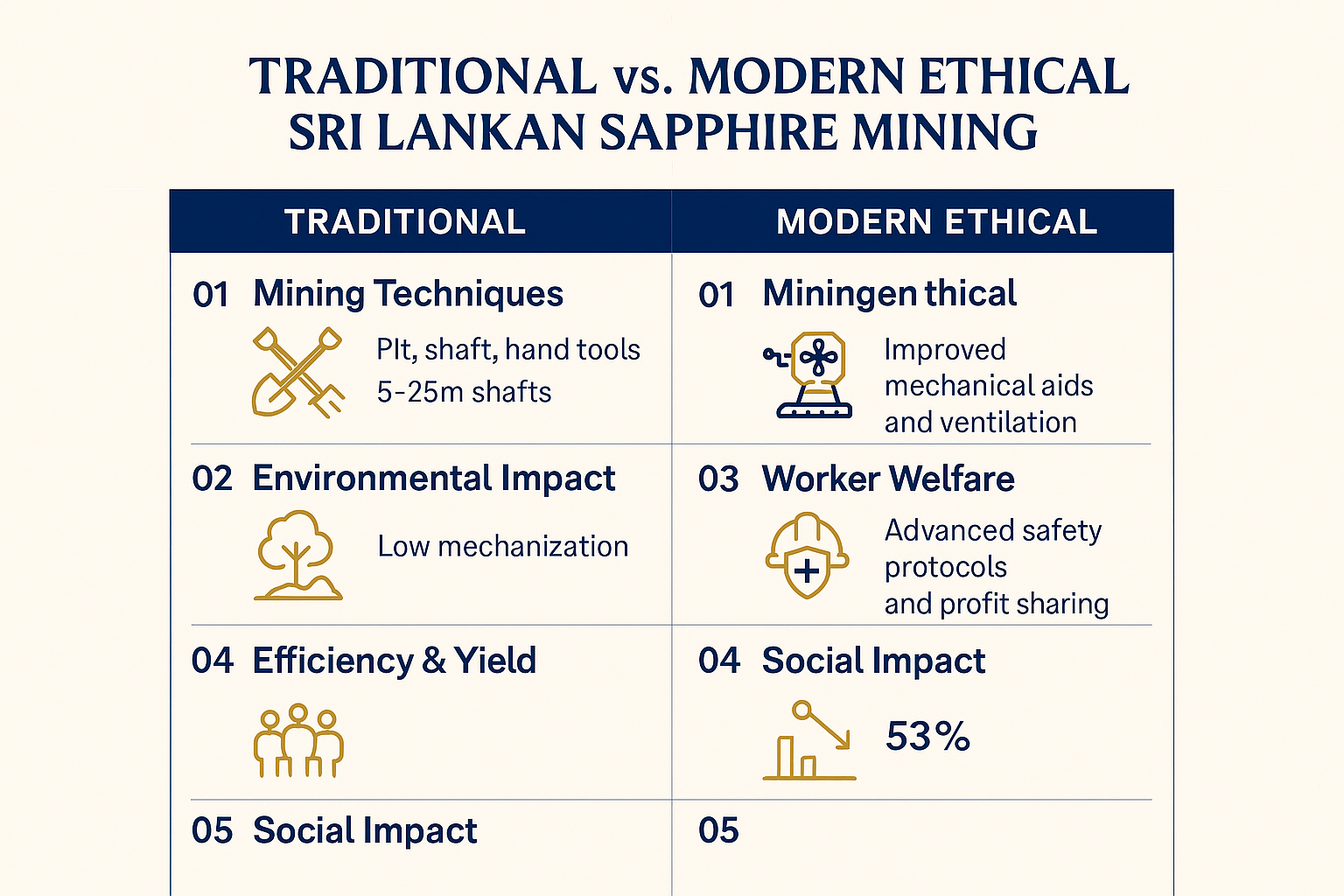
This artisanal approach is inherently low-impact. There is no use of heavy machinery that compacts the earth or harsh chemicals that poison the water table. It’s a system built on human skill rather than industrial scale.
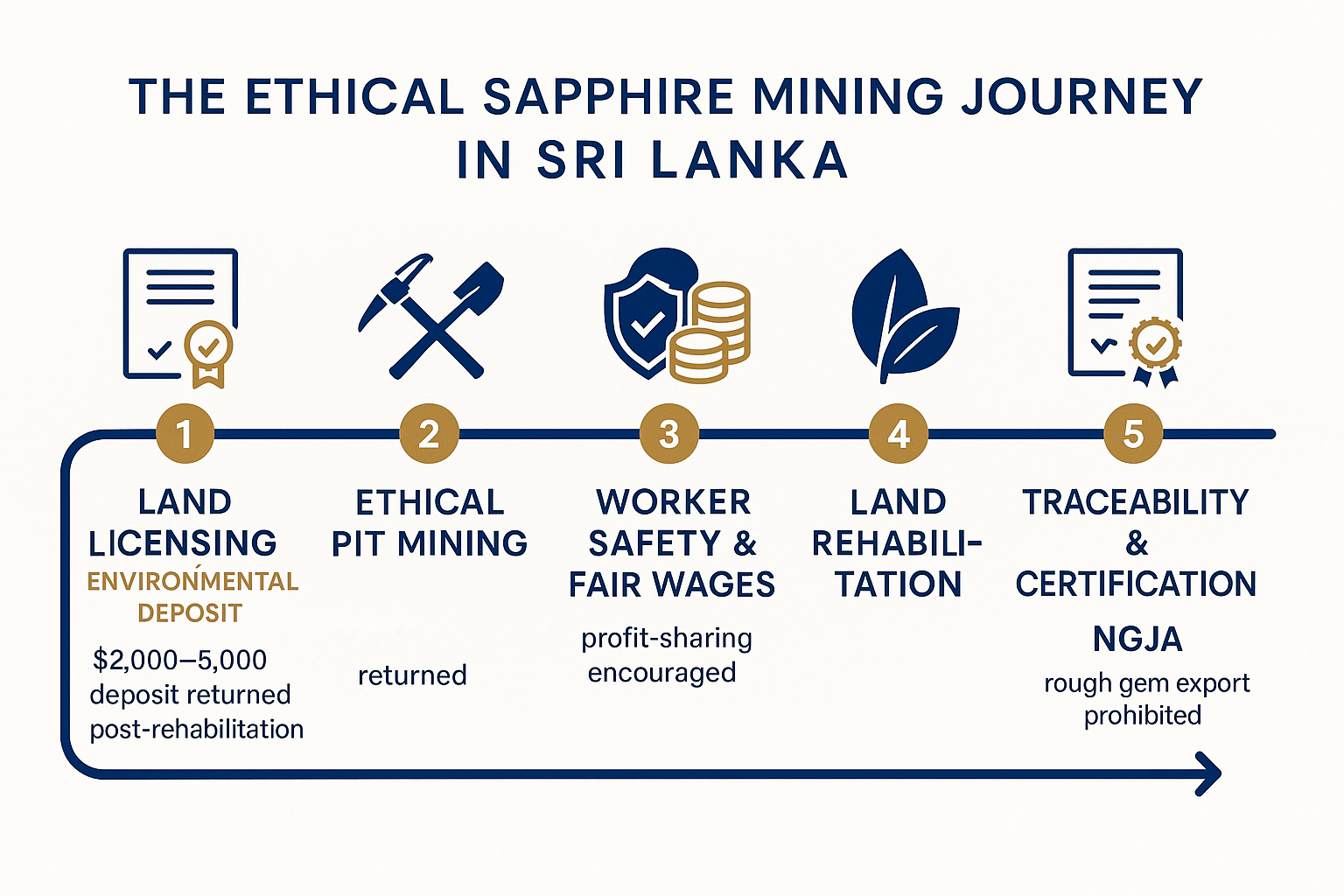
The true strength of the Sri Lankan model lies in its ability to pair ancient tradition with modern ethical governance. This isn't about replacing time-honored techniques but enhancing them with rigorous standards for environmental protection and social responsibility. For anyone evaluating ethical gemstones, understanding these details is critical.
The commitment to sustainability is codified in law and practice. Sri Lanka's National Gem and Jewellery Authority (NGJA) requires every license holder to post a cash deposit before mining begins. This deposit is only returned after government inspectors confirm the land has been fully rehabilitated—pits filled, topsoil replaced, and vegetation restored. This financial incentive ensures that miners are also stewards of the land. Our commitment to responsible mining is built upon this foundation of respect for the environment.
The economic structure of the mines is designed for shared prosperity. Instead of a simple daily wage, a profit-sharing model is common. The proceeds from the sale of gems are typically divided among the landowner, the license holder, and the team of miners who did the work. This cooperative system gives everyone a stake in the success of the mine, fostering a culture of mutual respect and turning mining into a direct community investment. This focus on people, communities, and culture ensures the benefits of the gem trade are felt locally.
The NGJA oversees every stage, from licensing to export. To support the domestic economy and enhance value, the government restricts the export of uncut gems, which has helped build a world-class lapidary industry on the island. This regulatory oversight, combined with the small-scale nature of the mines, creates a transparent supply chain where the journey of a sapphire from mine to market is traceable. It’s this combination of factors that makes them truly fair sapphires.
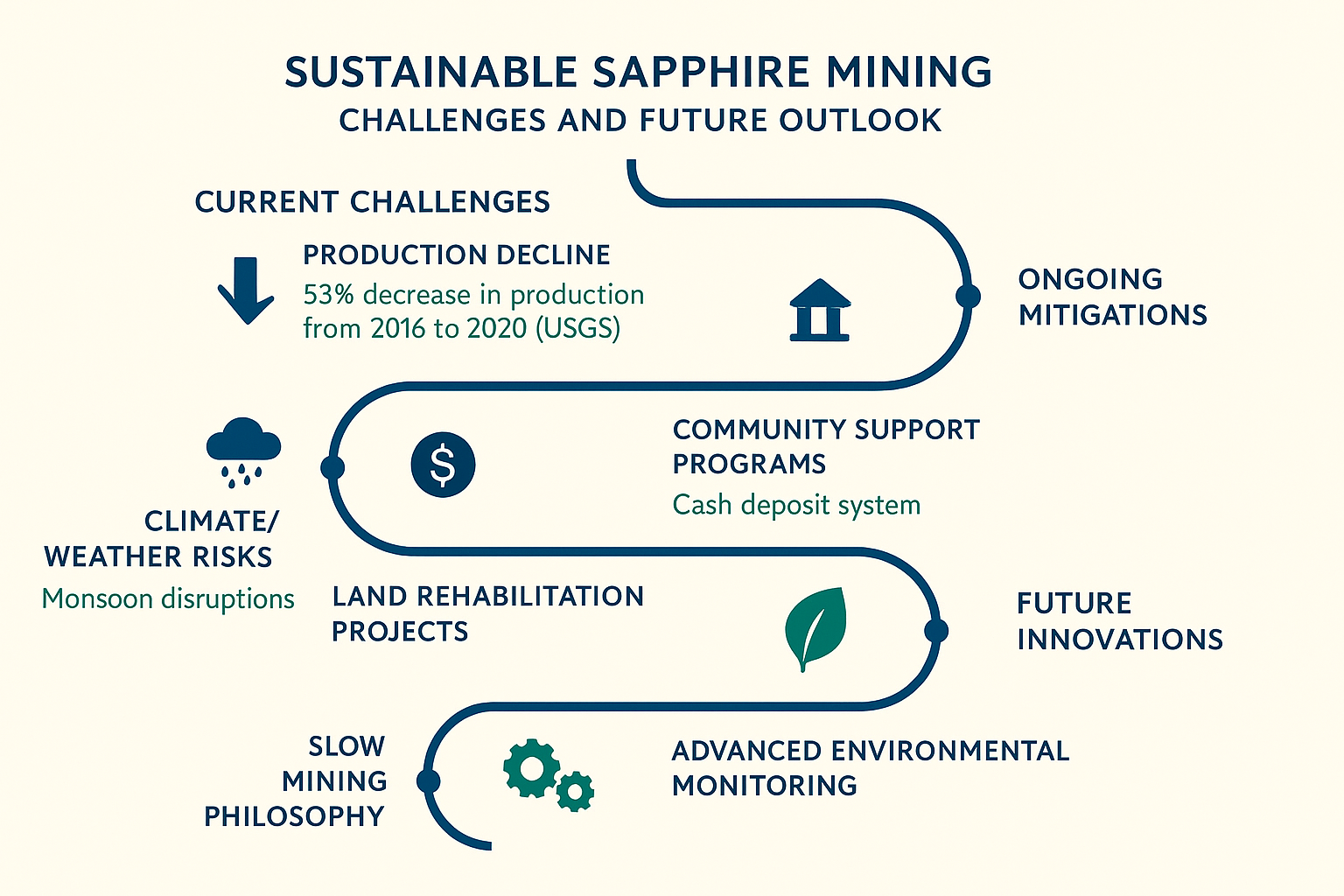
No industry is without its challenges. The Sri Lankan sapphire sector faces pressures from economic volatility, the environmental impact of monsoon seasons, and a reported 53% decrease in production in 2020 according to USGS data.
However, these challenges are being met with a forward-thinking commitment to "slow mining." Rather than pursuing mass extraction, the focus is on sustainable yields, preserving the resource for future generations, and continually improving safety and environmental protocols. This philosophy acknowledges that true value lies not in volume, but in quality and integrity.
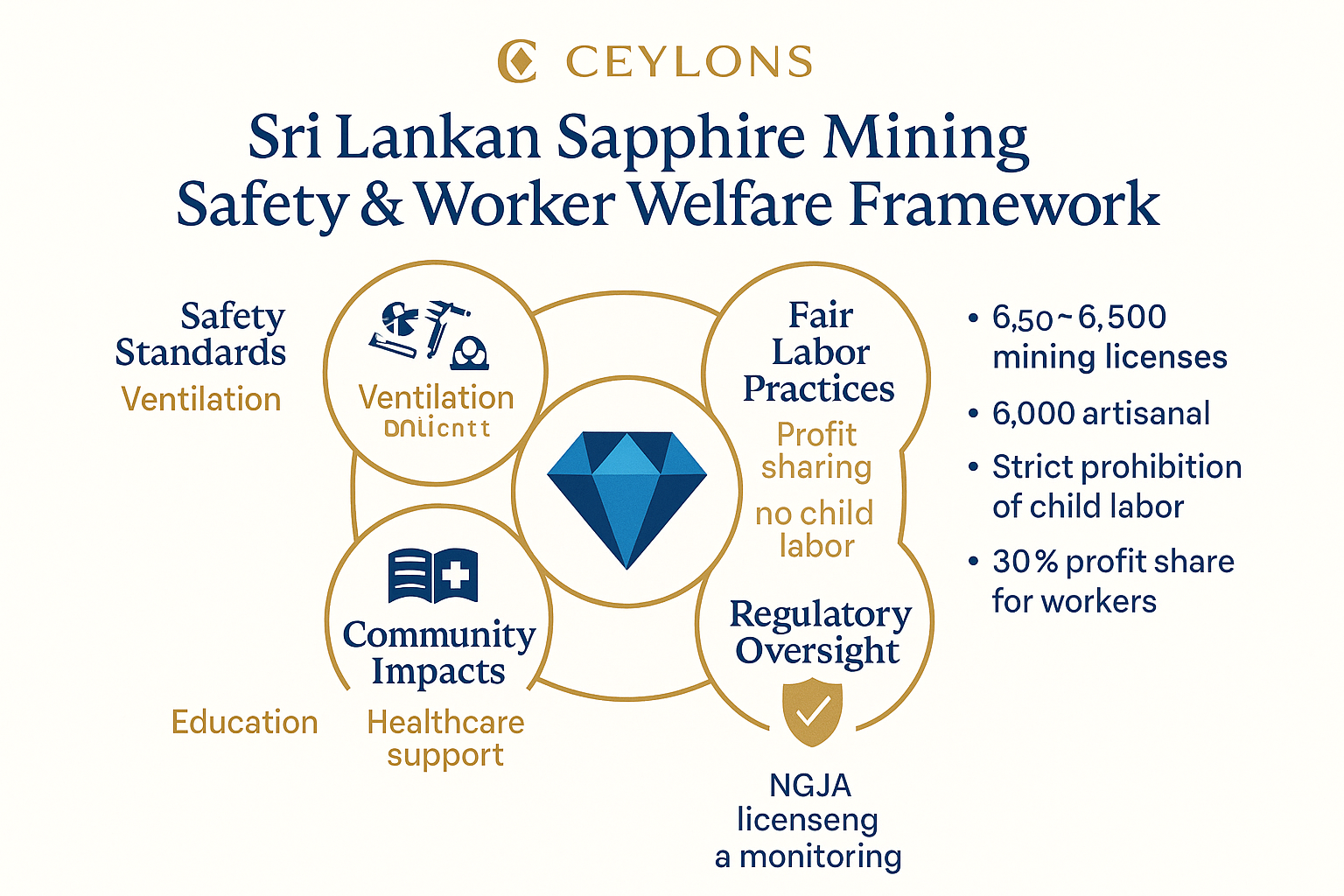
How can I be sure my Sri Lankan sapphire is truly ethical?
Authenticity in ethical sourcing comes from traceability. The regulated, small-scale nature of mining in Sri Lanka makes it possible to trace stones back to specific licensed mines. By partnering with suppliers like Ceylons who have direct-from-mine relationships, you get a transparent chain of custody that verifies the stone’s origin and the conditions under which it was extracted.
Is 'traditional mining' just an old-fashioned way of saying 'unsafe'?
Not in Sri Lanka's regulated system. While the methods are manual, the NGJA enforces safety standards. The industry's evolution includes enhancing these traditional methods with modern safety gear and improved equipment like mechanical winches, all while preserving the low-impact core of the practice. It's a blend of proven tradition and modern welfare standards.
What makes Sri Lankan mining more sustainable than methods in other countries?
The key differentiators are the near-total absence of large-scale machinery, the prohibition of chemical use in extraction, and the legally mandated land rehabilitation. Unlike open-pit mines that permanently alter landscapes, Sri Lanka’s small-shaft mining allows the land to be restored to its original state, often for agricultural use, after mining is complete.
Does buying a Ceylon sapphire actually help local communities?
Absolutely. The prevalent profit-sharing model ensures that the financial benefits are distributed directly among the local miners and landowners. This system empowers communities, supports local economies, and ensures that the wealth generated by the country's natural resources stays within the country, which is the core principle behind truly ethical sapphires.
Understanding the nuances of Sri Lankan sapphire mining allows you to make an informed decision—one that aligns with your brand's commitment to quality and integrity. The Sri Lankan model offers a unique combination of rich heritage, exceptional quality, and a verifiable framework for ethical and sustainable practices.
At Ceylons, we provide direct access to this world. Our stones are sourced directly from mines we know and trust, ensuring complete transparency from the moment a sapphire is unearthed to the moment it reaches you.
Explore our collection of fine and fair sapphires to see the difference for yourself.
Sign up to our newsletter now and get it directly to your mailbox.
CEYLONS | MUNICH stands for the finest Ceylon sapphires. A brand committed to responsible mining of Sri Lankan gemstones obtained in an ethical manner.